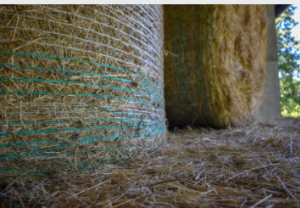There are many benefits associated with using artificial baling twine for binding, especially when it comes to hay baling. If you have a large amount of hay to be processed, the baling twine can be an excellent way to turn unneeded loose ends into usable hay while simultaneously saving time. Not only that, but a bale of hay purchased using a baling twine has twice the weight and twice the volume of the same bale of untreated hay. It is especially beneficial during the springtime when extra hay supplies are abundant, and bales are cheap.
 Unipak baling twine can be helpful in other applications as well. An excellent example of this is the creation of clothesline hangers. A clothesline hanger is simply a long piece of rope tied between two points on both ends, then hung on the line.
Unipak baling twine can be helpful in other applications as well. An excellent example of this is the creation of clothesline hangers. A clothesline hanger is simply a long piece of rope tied between two points on both ends, then hung on the line.
By using balers and thin ropes, it is possible to create an attractive lightweight rope that can attach a variety of items to a clothesline. The most common items attached to clotheslines are ladders and ropes, and other items can include heavy blankets or even a bedsheet. The advantage of using baling twines over conventional rope is that the balers do not snag or damage delicate clothing and linens. Additionally, bales can be stacked by hand without much problem.
The benefits of the baler twines also extend to hay bales. Instead of painstakingly splitting and re-tying each bale after it falls, using a baling twine will allow a single bale to hang from the eye of the bale, making the job of harvesting a single bale much easier. This technique could also be used with square bales as well, and the result is an aesthetically appealing square bale that does not split or become damaged.
There are many other applications for the baling twine as well. It can be tied onto the ends of bales and allowed to soak through to the ground, removing weeds and other debris. This technique can be helpful in areas where weeds have taken root in the soil, but more traditional pruning methods may prove problematic. The baler twines can easily pull the weeds out of the bales without damaging them. It makes hay production much more accessible.
A baling twine makes it easy to tie up loose ropes around the animal’s body for animal lovers who own farm animals, such as horses, cattle, and hogs. It makes it much easier to secure hoses to the livestock, especially if the animal has become tangled in the rope and becomes unable to free itself. In addition, this technique can help prevent unnecessary death during transportation from farm to farm. Another application is for picking up stray cows that have escaped from their paddocks.
In addition to the uses described above, the baling twines can also be used for more practical purposes. Many individuals choose to tie up loose livestock leads to keep them out of the way when transported, which is especially important when transporting livestock over long distances. Plastic twines can be difficult to thread because of the thickness of the string, which is not suitable for long-distance travelling. The baling twine acts as a lightweight and strong rope, easily threading through the hoops on the back of the trailer or truck.
Finally, the sisal twining rope, also known as a baling twine, is one of the best options for tying down ropes in agricultural fields. It can be used for tying a variety of different sized bags, from crates to grain bags to pallets. The strength of the baling twine comes from the high-quality sisal fibre that it is made from. The strength and durability of this rope make it ideal for tying down a variety of different sized objects in agricultural fields.
